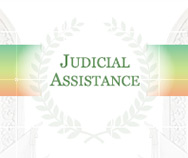Typical cases of IP courts of Beijing, Shanghai and Guangzhou
Case No 11: Autodesk, Adobe apply for pretrial evidence preservation
1. Background
Autodesk and Adobe are two software companies based in the US. They believed that Shanghai-based Ablues Design Exhibition copied and installed their AutoCAD, Photoshop and Acrobat softwares for commercial purposes without authorization. They couldn't get relevant evidence because the software was all on computers in the Shanghai company. And, relevant evidence such as computer software and data is intangible and easy to hide or destroy. Once transferred, hidden or eliminated it is hard to recover. So the plaintiffs applied to the Shanghai Intellectual Property Court for pretrial evidence preservation.
2. Ruling
The intellectual property court held that the evidence the plaintiffs wanted to be protected was valid under legal regulations and, as they couldn't collect it on their own for objective reasons, they had met the requirements of pretrial evidence preservation. The court ruled that related software on computers and other equipment in question should be preserved as evidence. After the ruling, the Shanghai third intermediate people's court worked with the intellectual property court and smoothly finished the pretrial evidence preservation work.
3. Significance
The case was the first of its kind since the Shanghai Intellectual Property Court was established. It involved evidence on nearly 400 computers, which required professional and complex preservation work. The intellectual property court invited technical experts to assist in evidence preservation and come up with a thorough work plan. Experts, inventory and field control teams were established with clear responsibilities. They stuck to operation norms and finished the preservation work. The case is important for intellectual property case enforcement mechanisms, implementation and trial linkage enhancement, pretrial evidence preservation efficiency and accuracy, and protection of legal rights of all parties.
Case No 12: Chanel sues Wendaxiang and Ramada Pearl Hotel Guangzhou for trademark right infringement
1. Background
Chanel is a French company established on August 27, 1954. The Chanel brand is a luxury brand worldwide. The company owns its figurative marks for such products as clothes, shoes and scarves and the CHANEL logo mark. Wendaxiang signed a leasing contract with the Ramada Pearl Hotel Guangzhou to sell clothes and leather products and promised that no fake and shoddy goods would be sold. Chanel came to believe that Wendaxiang had used its registered logo and infringed upon its trademark right. It applied to the court to have the two defendants stop the infringement and compensate its loss with 300,000 yuan.
2. Ruling
In the first trial, the Guangzhou Yuexiu people's court held that Wendaxiang infringed on Chanel's registered trademark right and ordered it to stop the violation and compensate for loss, but that the Ramada Pearl Hotel Guangzhou shouldn't be held accountable. Chanel didn't accept the ruling and appealed. The Guangzhou Intellectual Property Court found that Chanel was a famous brand and the Guangzhou hotel was an upscale facility, so the hotel should be responsible for sales of shoddy products. In addition, Wendaxiang committed violations repeatedly, and the hotel should have noticed them if it was paying due attention. The court ruled that the hotel turned a blind eye to the trademark violation and should be held accountable for assistance in the infringement. Therefore, the two defendants were ordered to pay 50,000 yuan to compensate the plaintiff.
3. Significance
In recent years, the clothing market and hotel's leased shops have often been found selling shoddy products. Trademark right holders often sued shop owners, lessors and management personnel together and asked them to shoulder related responsibilities. In cases such as these, it's important to determine the responsibilities of the shop lessors and management parties. In this case, the court considered the plaintiff’s trademark popularity, whether the shop's violations were evident, as well as the relations between the lessor and the shop operator. It clarified the responsibilities of the lessor based on the circumstances. The ruling explored assisted infringement identification and offered guidance for famous brands’ legitimate benefits protection.









